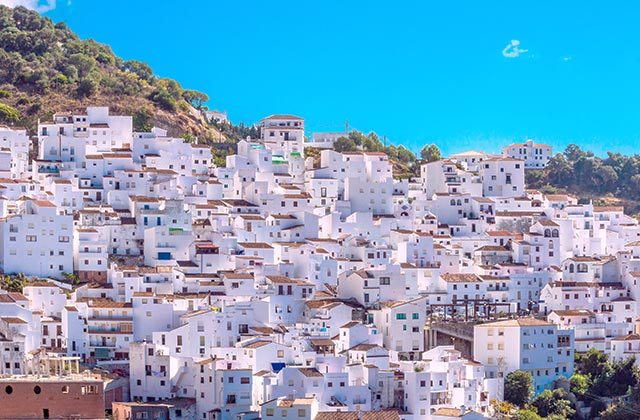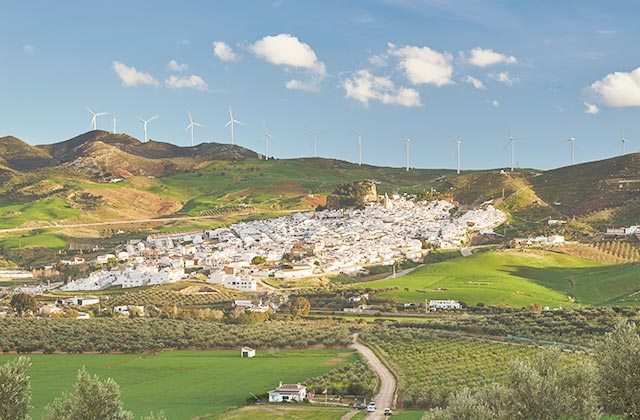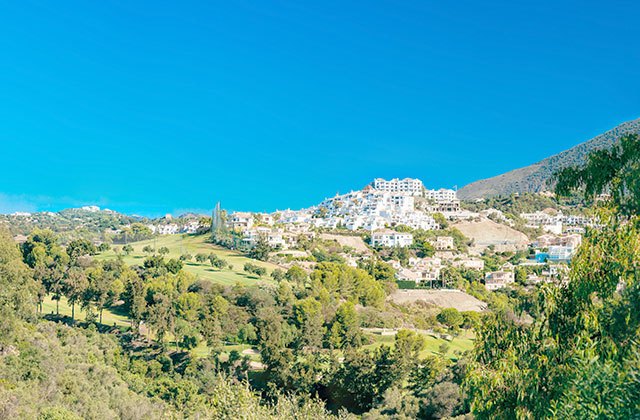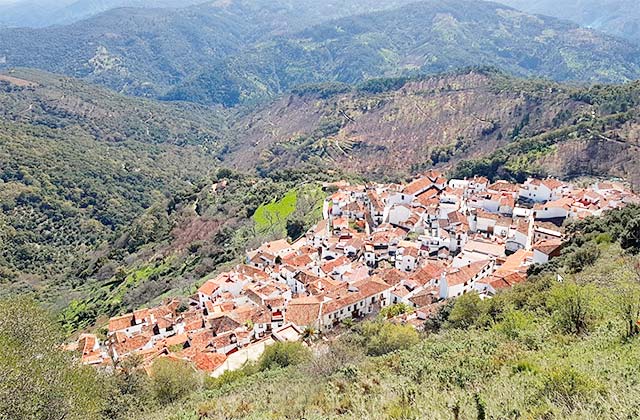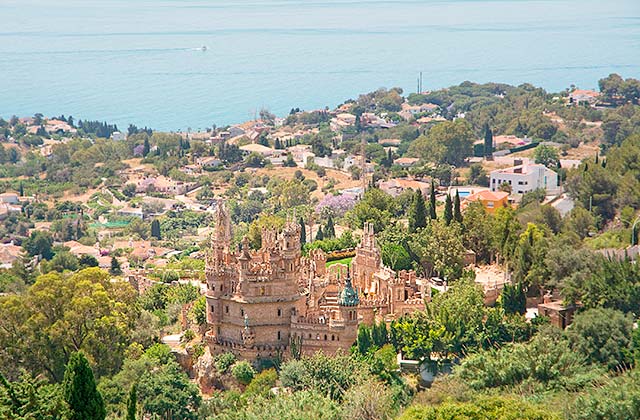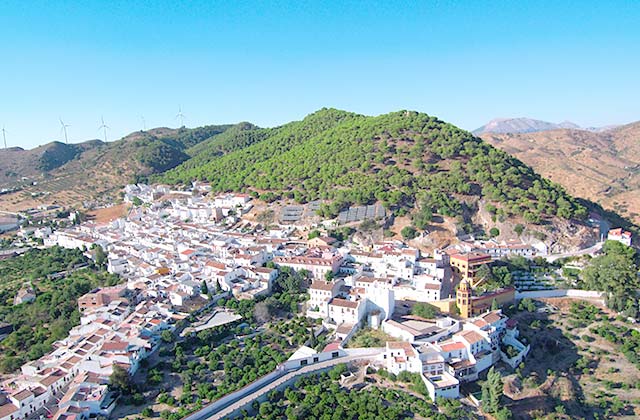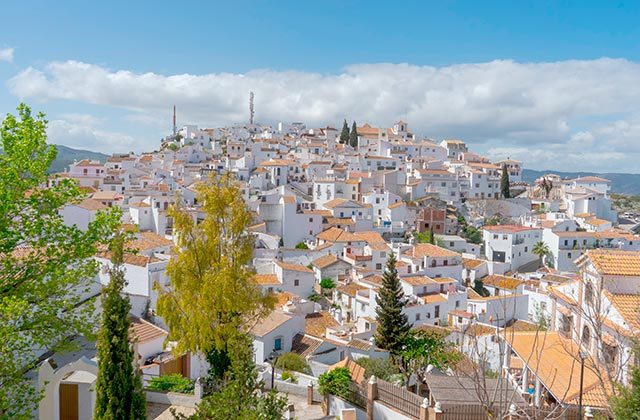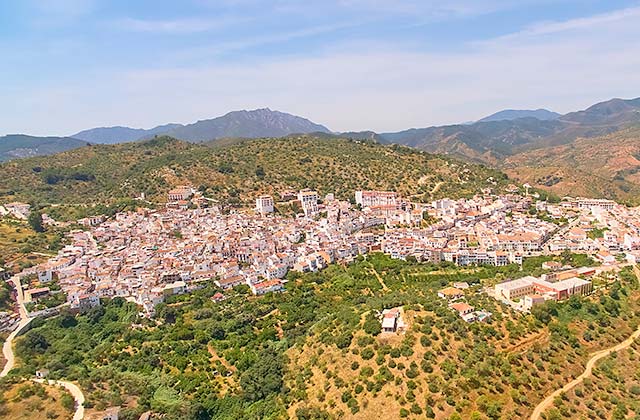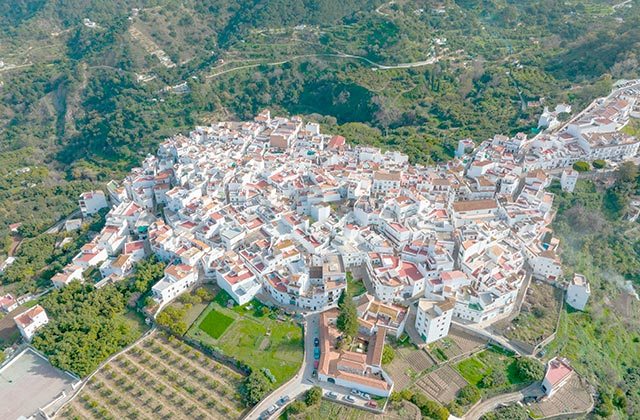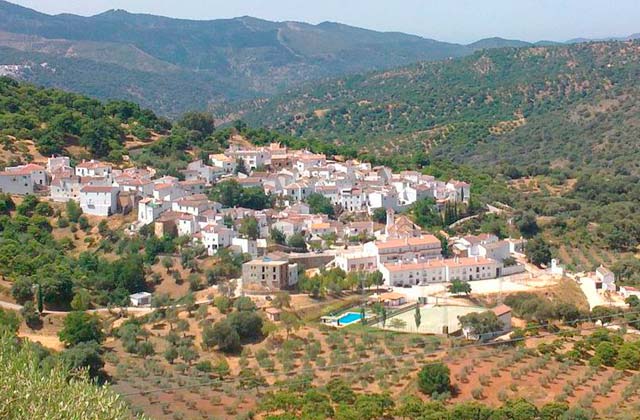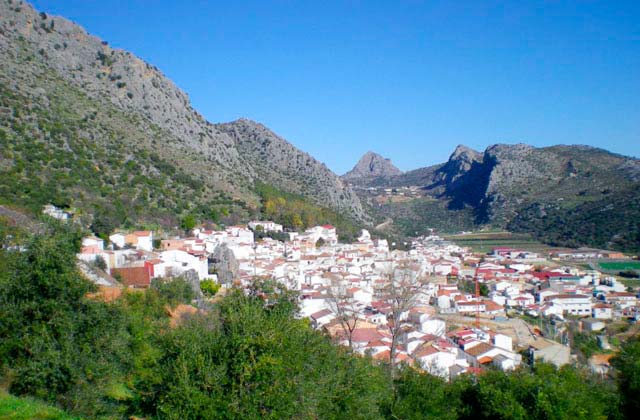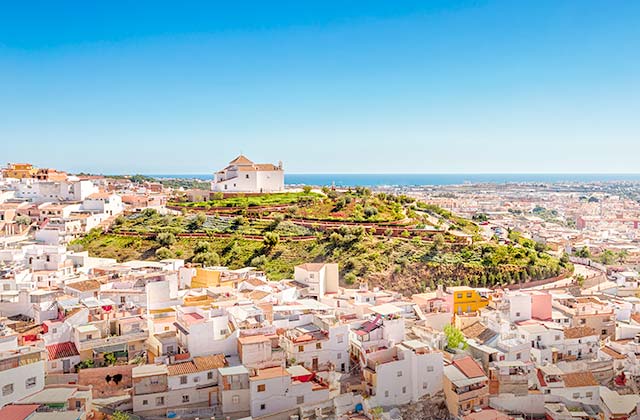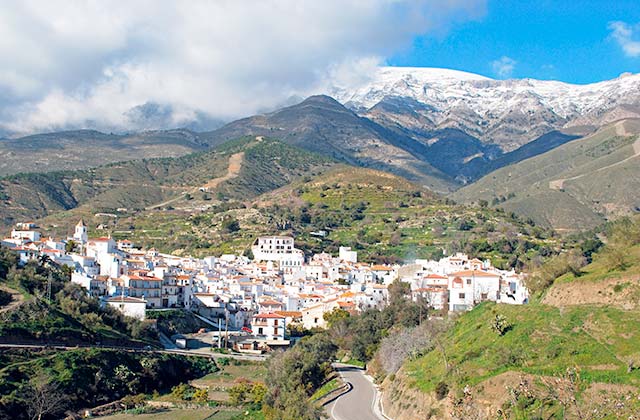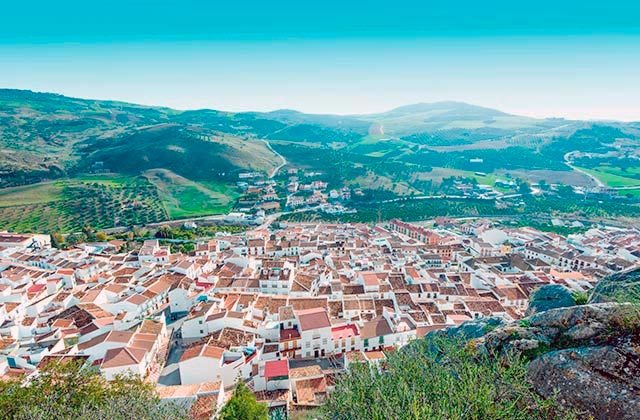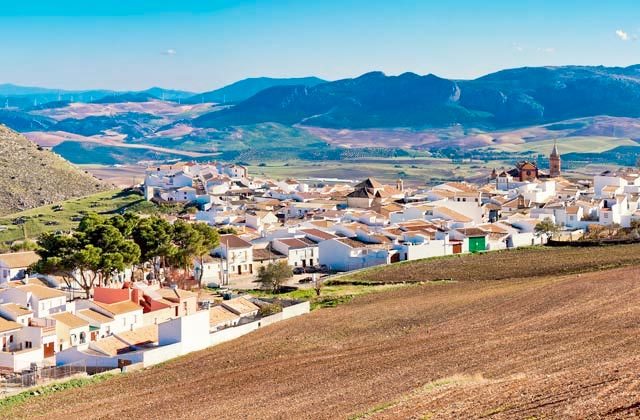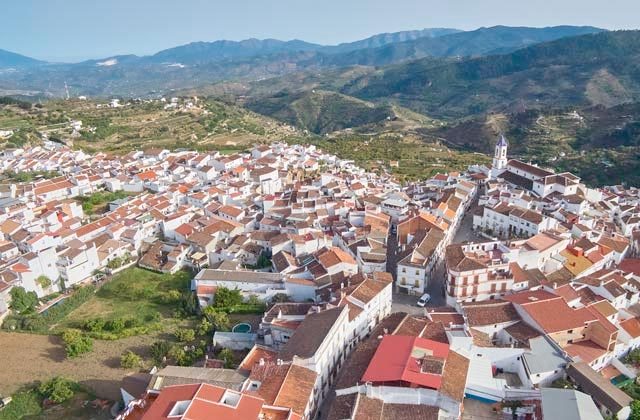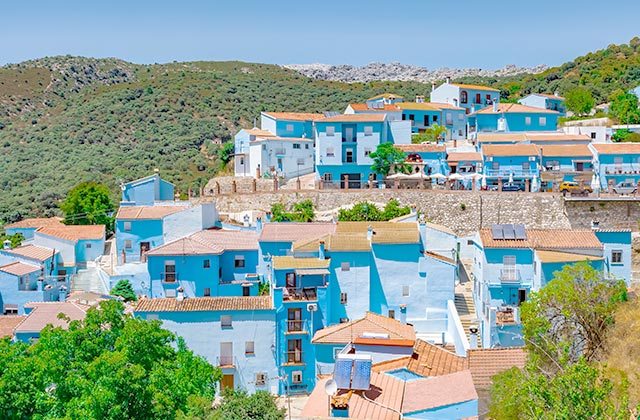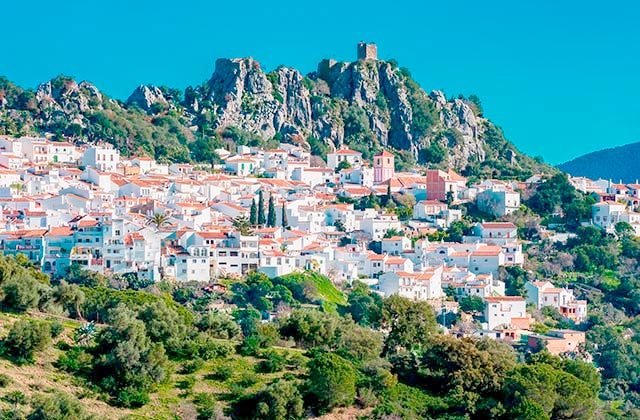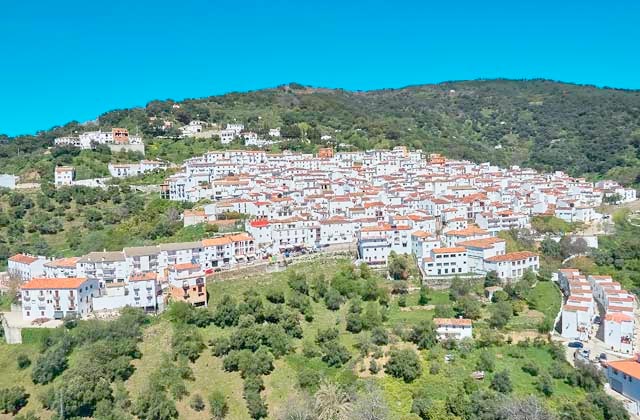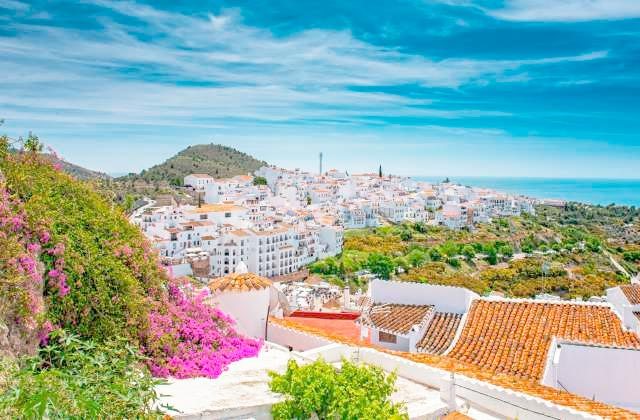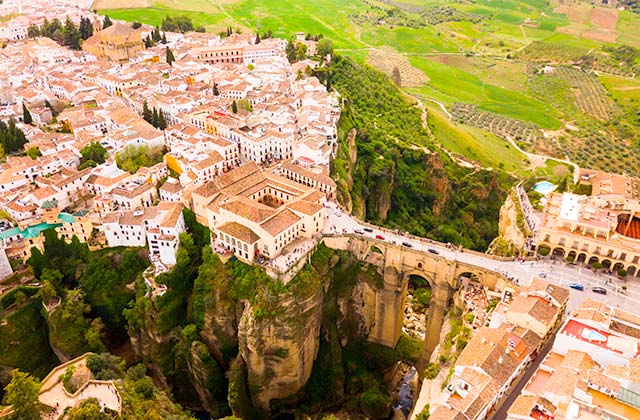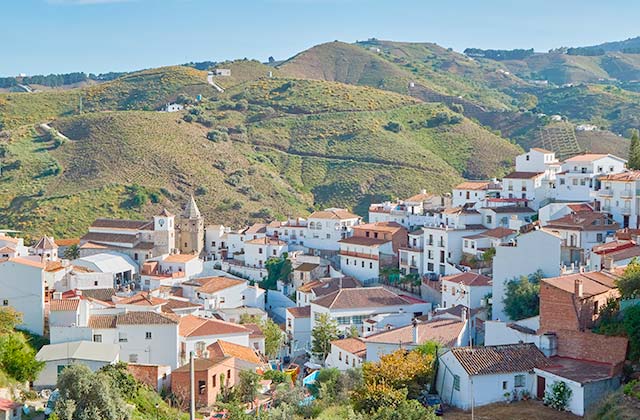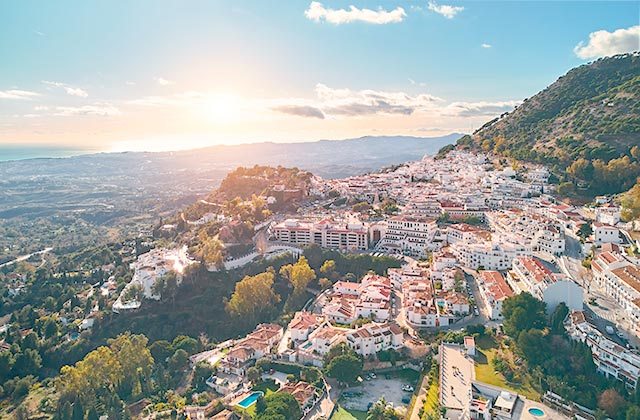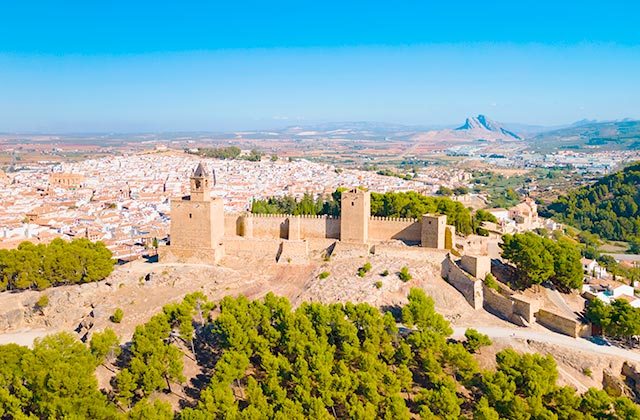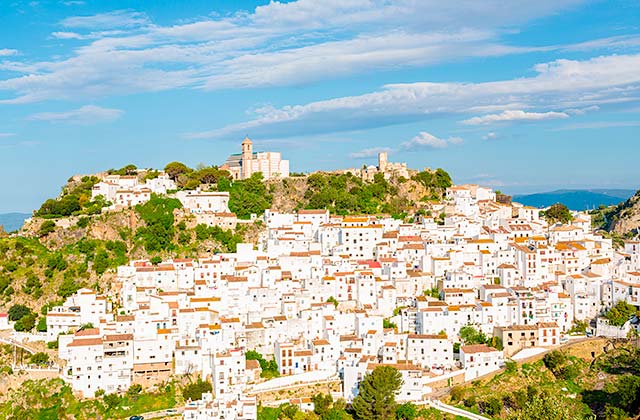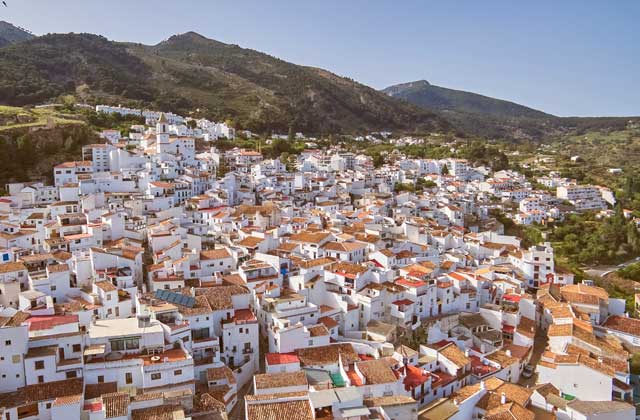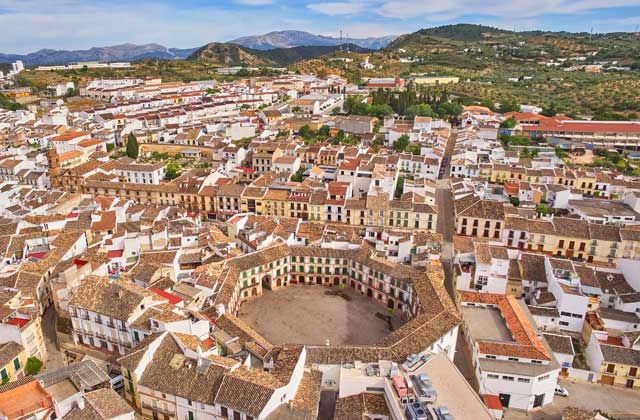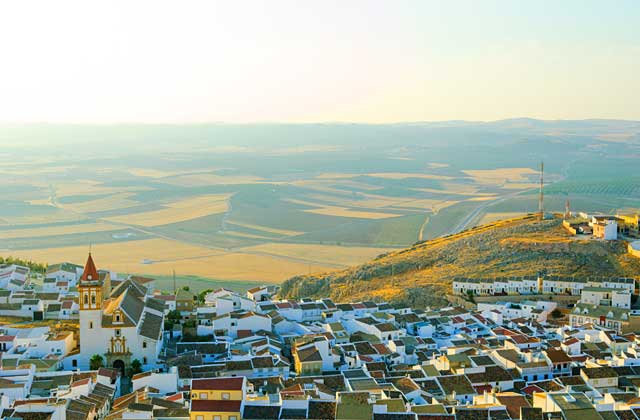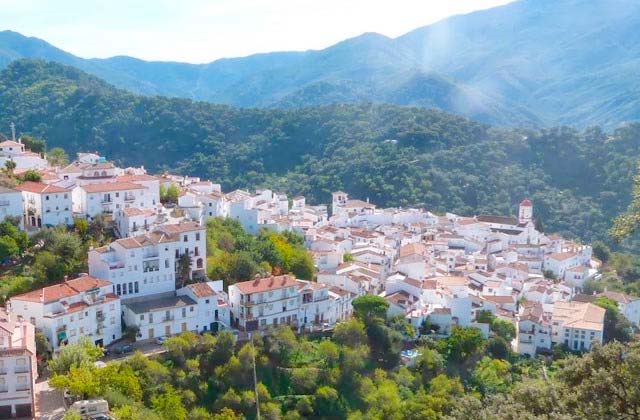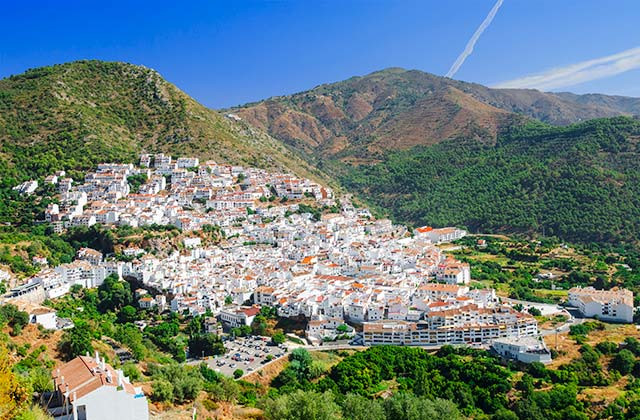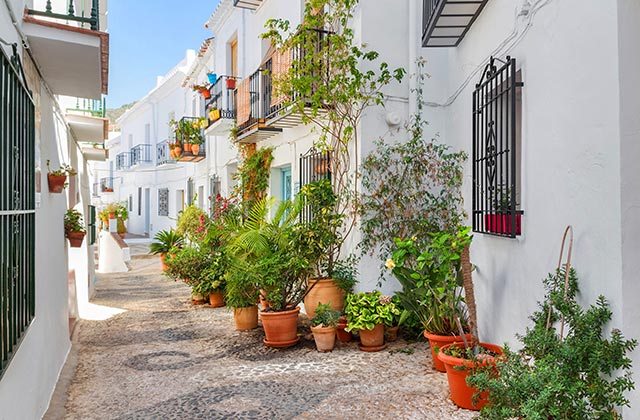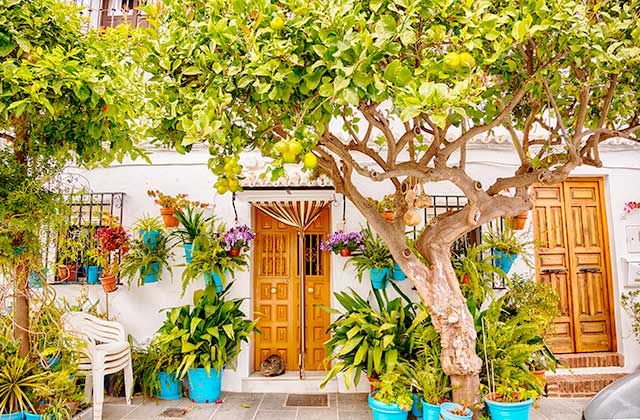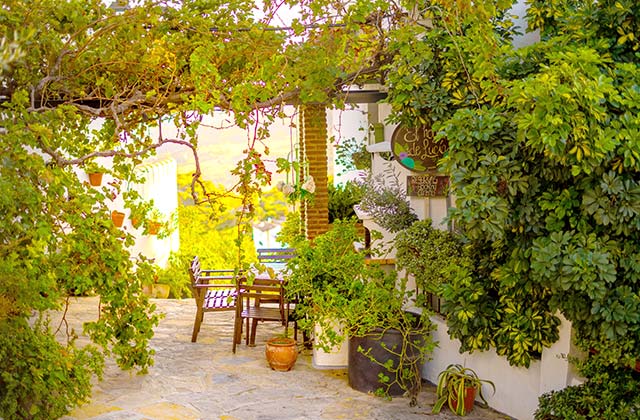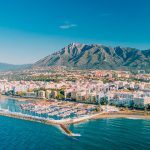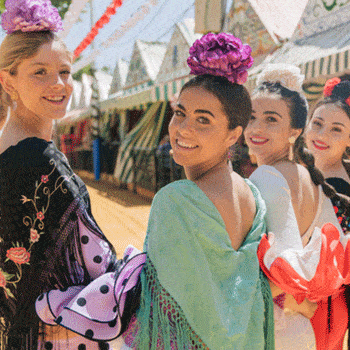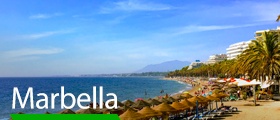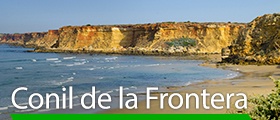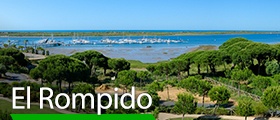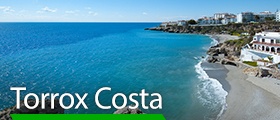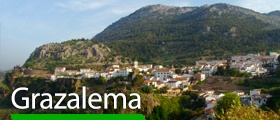
The spell of inland Málaga: the prettiest villages in the province
Malaga is the perfect province for enjoying rural tourism; of that we are more than sure. Malaga villages are home to some corners of enormous beauty, since they are blessed with some stunning landscapes and a spectacular relief. Málaga is much more than its famous coastline, since it also boasts inland mountains from the Desfiladero de los Gaitanes between Álora and Ardales to the Hundidero Cave in Benaoján, via the deep faces of the Ronda hills, not to mention the beautiful Torcal de Antequera. Málaga white villages preserve the abundant historic, artistic and cultural heritage of the many cultures and civilisations which have populated its lands and it is this white village route which captivates thanks to a magical tour which showcases in each village all the essence of the most original Andalusia.
Do you want to see for yourself? Whether rocked by the Mediterranean or hidden amidst its impressive chestnut forests in its hills. With impressive monuments or elegant old towns full of magic. All different, but all with a point in common; prepare your five senses because here are some of the most charming Málaga villages.
Malaga villages
Alpandeire
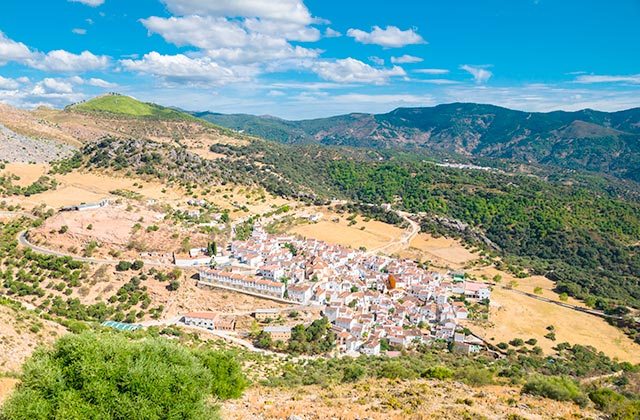
Alpandeire is a beautiful and elegant municipality of the Serranía de Ronda. A village which stands out for its location and for its steep streets, in addition to its houses with white Arab style facades. In Alpandeire we can find points of interest, such as the Chorrerón Waterfall, the San Antonio de Padua Parish Church built in the mid-16th century, the Canalizo and Infiernillo faces, as well as the famous Friar Leopoldo Family House.
Ardales
If we talk about attractive municipalities in Málaga province, there is no doubt that one of the first which comes to mind is Ardales and the King’s Little Path. This is no surprise, since it is one of the most incredibly beautiful and spectacular itineraries in Andalusia, if not in Spain. However, it would be unfair not to talk about other attractions which we can find in Ardales, since this municipality has an impressive historic and artistic heritage, for example the Doña Trinidad Grund or Bobastro Caves, a cave settlement of enormous historic wealth, and when it comes to what to do within its old town, we recommend you take a stroll through its streets, since we can find different places of interest, such as the Los Capuchinos Convent or the Nuestra Señora de los Remedios Church.
Benahavís
Benahavís is one of the most picturesque localities in Málaga. We are talking about an incredibly beautiful mountain locality which is generally recognised as “the dining room of the coast” for the large number of restaurants located there. In addition to these, you will find big hotels and several golf courses. But make no mistake, Benahavís offers much more since the municipality also has several important monuments such as Montemayor Castle dating from the 10th century and the so-called Reina de la Torre or the Virgen del Rosario Parish Church.
Benalauría
Right in the heart of the Serranía de Ronda we can find a natural site as amazing as the one where this village is nestled. One example is the Valle de Genal, which is characterised by its amazing chestnut, oak and cork forests and is well worth admiring in autumn.
You can visit different points of interest, such as the House of Moors and Christians Interpretation Centre, the 16th century Santo Domingo de Guzmán Church and the Roman Columbarium of Cortijo del Moro.
Benalmádena Pueblo
The village of Benalmádena is made up of three small towns. The first is Benalmádena Costa, followed by Arroyo de Miel and finally Benalmádena Pueblo. Today we want to tell you about the third one, since despite being next to large towns of the Costa de Sol like Torremolinos, it maintains a traditional mountain village appearance with its traditional narrow streets and white façade houses. Its main monument attraction is Santo Domingo de Guzman Church, from where you can enjoy amazing views. Though you also should not miss the elegant España Square with its pretty orange trees and the picturesque Niña de Benalmádena statue.
Carratraca
Once thing we must talk about with regard to Carratraca is hot springs tourism, since this is the main attraction of this village, a pretty municipality in Guadalteba county. It is a municipality which has grown under the umbrella of hot springs tourism and the magnificent therapeutic properties of the Sierra Blanquilla spring. Today you can enjoy these thermal waters in the Neoclassical building of the Carratraca Hot Springs. Once in the town you should take a stroll through its streets, since they have a very peculiar architectural style. In fact, its old town was declared a Historic-Artistic Complex in 2004. Also worth a visit are some of its monuments, such as Nuestra Señora de la Salud Church, the Neo-Mudéjar Town Hall building or the Bull Ring with its stands placed on a rock.
Comares
Comares rises over a hill from where the sierra and the adjacent mountains can be seen. It is the jewel in the crown of all La Axarquía. Like many other Malagan municipalities, its Arab origin is noted in many of its monuments you will be able to see, for example the Arabic Arches, the Aljibe de Maxmúllar, dating from the 14th century, and the street of the Muslim Arches. Nor should you miss the old wall of Comares Castle, the elegant Los Verdiales Square or the village’s three old fountains. Another very peculiar aspect of this municipality is that it forms part of the famous Raisin Route, dedicated to the Malagan raisin which is considered by experts to be the best in the world.
Guaro
Guaro is a beautiful and charming white village in inland Málaga. It is famous for celebrating one of the most picturesque festivals in Andalusia: the Luna Mora. This festivity is celebrated in early September and during this time the municipality waits until sunset to embellish itself with thousands of candles which light up the dark alleys forming its old town. For a second you will think that you are in another time and place, more so when you come across Sephardic music singers, with women dressed up in exotic clothing dancing to the sound of the music, with story tellers and workshops for children… Quite a spectacle not to be missed.
Istán
Whoever said that Málaga was dry had not visited this municipality of the beautiful Sierra de las Nieves. The beauty of its natural setting, transiting the largest river south of the Sierra de las Nieves, the River Verde, and its multiple sources, before reaching the famous Concepción Reservoir and crossing amazing sites mean that Istán came to be known as the Green Lung of the Coast or the Spring of the Costa del Sol. It is normal that 95% of the village is considered a protected World Biosphere Reserve zone. If that were not enough, the town itself is the starting point for a dozen hiking routes covering extraordinary natural sites.
Parauta
Situated between the Genal Valley and the Sierra de las Nieves, this is a traditional white village, whose design bears the memory of its Andalusian past with steep, narrow streets. Its fusion with the environment and its surroundings that comprise luxuriant forests make it an ideal place for nature tourism lovers.
Benaoján
Benaoján is in the far west of the province, next to Ronda and in the middle of the Sierra de Grazalema. It is a white village located under several hills and in the midst of uneven, spectacular terrain.
Its surroundings are home to a couple of attractions that are worth visiting: the famous Pileta Cave, with its Upper Paleolithic cave paintings, and the imposing Hundidero Cave, over 164 feet high, heaven for potholers and nature lovers.
Vélez-Málaga
This is the capital of Axarquía and has one of the province’s most notable heritage sites. Palaces, churches and convents, especially those of the Mudejar and Baroque style, are dotted around its white streets.
What stands out most is the Church of Saint Mary the Great, the Convent of Las Claras, the Convent of Las Carmelitas, the Hermitages of St. Christopher and Los Remedios and Beniel Palace, which now houses the María Zambrano Foundation and the International University of La Axarquía.
What’s more, a number of excursions can be done from Vélez-Málaga to all the corners of this beautiful district, including Salares, the jewel of the Mudejar Route, El Borge, Comares, Nerja and Frigliana…
Sedella
Sedella is an amazing Malagan municipality bordering Granada province. It is located within the Sierras de Tejeda, Almijara y Alhama Natural Park and we are talking about a locality of Arab origin surrounded by an amazing natural setting, which, along with the different places of interest which we can visit, makes it a unique village to see in Málaga province. In this village we can enjoy historic spaces such as the Casa Torreón, an amazing Mudéjar style building with Renaissance columns. Another obligatory visit is to San Andrés Parish Church, its spectacular Roman Bridge or the various washhouses found along its streets.
Abdalajís Valley
Abdalajís Valley is heaven for lovers of active tourism, but above all for fans of hang gliding and paragliding. Known as the ‘capital of flying,’ it enjoys privileged surroundings and favourable weather conditions that make it an ideal place for practicing activities in the midst of nature. It is located in southern Antequera, surrounded by the lands of this municipality and opened by a corridor to Guadalhorce Valley. This village of white houses extends to the feet of the sierra of the same name. The Old Inn, Palace of the Counts of Corbos, Church of St. Lorenzo and Hermitage of Christ of the Sierra should not be missed.
Cañete la Real
Cañete la Real is located in the transit lands between Serranía de Ronda and Vega de Antequera. This village in Guadalteba District was settled on a mountainous vantage point surrounded by copse-bedecked hillsides, that gives access to grain fields and olive groves. Its surroundings seduce fans of active tourism, given its resources for doing activities such as climbing or hang gliding. Travellers who would rather enjoy the cultural offerings of Cañete la Real can visit the Church of St. Sebastian, the Convents of St. Francis and the Holy Sacrament or The Watchtowers of the Territory Interpretation Centre located in Hins Qannit Castle.
Yunquera
The municipality of Yunquera forms part of the Sierra de la Nieves Natural Park and its surroundings, declared a Unesco Biosphere Reserve. Its lands constitute one of the areas with the richest landscape in Málaga Province and are ideal surroundings for practicing activities in the midst of nature. The centre of the village starts from its old Medieval design. The Church of Our Lady of the Incarnation and the Castle-Watchtower are Yunquera’s main monuments.
Júzcar
The “smurf village” has earned its place in travel guides after “dyeing itself” blue. The inhabitants of this municipality of the Serranía de Ronda painted their houses this colour after being chosen to promote the film of the characters created by the artist Peyo. But Júzcar has more to offer: along with the 16th century Church of St. Catherine it is home to the outstandingly beautiful Genal chestnut grove.
Original towns of Andalucia: Júzcar
Gaucín
Gaucín extends like an amphitheatre from the feet of Águila Castle to the skirts of the Sierra del Hacho. This village in Serranía de Ronda District is a true vantage point from which the Sierra Crestellina, Genal Valley and Mediterranean Sea can be made out. The village has preserved its Moorish urban design, with streets adapted to the land and white houses adorned with railings and balconies.
Gaucín is known as the ‘Balcony of the Mountains’ because of the panoramic views it offers. Its urban outline is of Arabic origin, with winding streets that its white houses look out onto. The village also has a series of 17th and 18th century stately homes with doors of post and lintel construction and family courts of arms carved in stone.
Jubrique
Jubrique is a village in Genal Valley of Arabic design and genuinely vernacular architecture. Its streets form a lattice labyrinth, in which white houses were built with chimneys and shutter doors. An outstanding element of the distinctly Andalusian urban landscape is the Church of St. Francis of Assisi, built on an ancient mosque. This municipality of Serranía de Ronda also has nine routes for touring its natural landscapes on foot, horseback or by bicycle or 4×4 vehicle.
Frigiliana
Malaga’s Axarquia area is known for its characteristic charm and its exquisite cuisine. Frigiliana is a clear example of white house villages that have retained their Muslim roots. Walking through its streets is like diving into the old souks of Al-Andalus. This town keeps a close bond with Granada de Boabdil and many of its hidden corners are reminiscent of it. It is commonplace to find facades hanging with baskets of geraniums, a typical Andalucian plant. Molasses is the flagship product of the area and it is home to the only factory house in Europe.
Ronda
This town is one of the most beautiful in the Malaga province. It is internationally known for its famous “Tajo”, a geographic barrier that served as a natural defence for the inhabitants of this place in years past. Ronda is a hotbed for cultural tourism, which has allowed the accumulation of enormous financial wealth. If you find yourself close, you can see the Islamic walls and gates of the bullring, the Marquis of Salvatierra palace and the Pileta cave, among the town’s other monuments. The Ronda bullfighting tradition makes its “la Corrida Goyesca” festival one of the most amazing and original in the world of bulls.
Ronda: 10 things to see beyond the Tagus
El Borge
This small town in the Axarquia area of Malaga is part of the famous “Ruta de la pasa” or route of the raisin. The surrounding vineyards provide a stunning natural landscape, complete with all shades of green and the endearing image of the “ferrymen”, the drying of the grapes.
El Borge retained its original Muslim elements, including its steep and narrow streets and its mosque, where years later the Catholic Kings built the Our Lady of the Rosary church. The temple preserves the Moorish tower of Al-Borg, which would later provide the town with its name – a must see. If you head to El Borge, you have to try its flagship product – the passes, or raisins – and enjoy a quiet walk along its charming streets, the Aluca Park and the warmth of its people.
Mijas
Mijas is one of the most picturesque places in the province. Although the area is large and has a coastal stretch, the mountain site of Mijas Pueblo is where the true charm of the town lies. Known internationally for its “Donkey Taxis”, Mijas has superb views of the Mediterranean Sea. From typical Andalucian whitewashed house to flower pots on the walls, Mijas is a pleasure to the senses when strolling through the streets. If you come to Mijas, don’t miss out on a visit to the Muralla, the area around the bullring and the gazebo around the Virgen de la Peña. As a curiosity, one can take a walk to the “Carromato de Max”, a museum of miniatures where you can enjoy authentic works of art made in a lentil, a grain of rice or on the head of a pin.
Things to see and do in Mijas pueblo
Antequera
If you want to find a group of extremely beautiful people, head to Antequera. The nature, art and heritage of this area make it one of the most beautiful in the heart of Andalucia. Here we can take a journey back to prehistoric times from today just by taking a glimpse of its monuments. The dolmens, collegiate, churches, convents and mansions come together to create a privileged urban environment. Every corner of Antequera is a sight to remember.
However, its not only the town that draws people to the area. Within its municipal area, one can find one of the only natural karsts – a geological formation – in Spain: El Torcal. If you head to the Malaga province, one should head up to see Antequera. Enjoy its streets and art, and above all, do not forget to give your palate a treat by trying a typical muffin, “la porra”, as well as the convent sweets.
Excursion to Antequera, discover el Torcal in one day
Casares
If you visit the Malaga province, Casares is unmissable. Its steep and uneven slopes – home to white houses – help make it a “hanging village” of the most beautiful Malaga interior.
Also known as the birthplace of “Blas Infante”, the father of the nation Andalucian, Casares is crowned by a mediaeval castle overlooking the villages all around. If you go through this area, you have to stop and try one of their “Casarena soup” dishes, as well as a taste of the mountain rabbit.
Casarabonela
This town has managed to combine its Muslim and Christian past like no other. One can still see parts of the old Casr Bonaria (the former name of Casarabonela) and the town’s Arab history is evident in its narrow walkways. The town’s most most interesting passages of history are reflected in the local ceramic, painted tiles that adorn its squares and corners. If you visit this town you can also see the Andalucian garden at the foot of the Moorish castle and the Museum of Sacred Art.
Archidona
If you travel to the Málaga province, you cannot miss such an important landmark as Archidona. Its famous Plaza Ochavada is a benchmark of Andalucian Baroque art and is the symbol of the town. Resembling an ancient open-air theatre, it is now the venue that plays host to most local events. This Malaga town has a lengthy list of churches and religious buildings that combine typical Andalucian plazas, archaeological sites and an unbeatable view of the valley of the Antequera region.
Teba
If you are a history lover, be sure to stop by Teba. Stately white houses and mansions are set at the foot of an ancient Arab castle and an 18th century baroque church. However, the high point of the town is really seeing examples of settlements from Iberians, Romans and Andalucian through history. It is also an important place for crafts, such as esparto (ropes) and embroidery. If you’re in search of sports, Teba also offers the chance to row, canoe, explore caves, climb and glide.
Alora
In the interior of the Malaga province, there is a village of white houses surrounded by the most typical native tree in Andalucia – the olive. However, if there is one especially noteworthy thing about this place, it is one of the most beautiful landscapes in the province: El Chorro.
This privileged area of nature is located 12 kilometres from the town, with the Gaintanes Gorge standing as the most important point. This rocky gorge is over 100 metres deep and has one of the most spectacular views that can be found in the province. If you are travelling to Malaga, you cannot miss out on this place.
Genalguacil
Genalguacil is commonly called the Museum Village thanks to the large amount of works of art you can find in its streets. The locality is located in the heart of the Genal Valley and is a village with a lot of charm where you can enjoy its white houses and narrow, winding streets.
There is a lot to do in Genalguacil, namely the Fernando Centeno Contemporary Museum of Art. Also, if you are passionate about botany, you’re in luck since thanks to its landscape, you can see chestnuts, fir trees or cork trees.
Ojén
Ojén is the typical village nestled in the mountains, but it has a totally coastal climate since it is very near Marbella and the Mediterranean. This locality is surrounded by the Blanca and Alpujata mountains. This village is not just nature, but home to one of the most particular music festivals in the entire region: Ojeando. This festival comprises outdoor concerts across the locality that will delight all who attend.
Beautiful natural beauty and picturesque corners full of rich heritage and traditional cuisine are just some of the many reasons you have to stop through the province of Malaga. Its interior villages retain the charm typical of Andalucia and loved by all who see them. They come together to create a mixture of sensations worth exploring.
Tips and suggestions for visiting the white villages of Málaga
Visiting the white villages of Málaga is a charming experience that combines natural beauty with cultural richness and Andalusian hospitality. Here are some tips and suggestions to make the most of your visit:
Itinerary Planning
- Research and select the villages: Some of the most notable white villages in Málaga include Ronda, Mijas, Frigiliana, Casares, and Gaucín. Research each one to see which interests you the most.
- Duration of the visit: Decide how much time you will spend in each village. Some can be explored in half a day, while others, like Ronda, deserve at least a full day.
Transportation
- Car rental: The most convenient way to visit the white villages is by renting a car. This gives you the flexibility to move at your own pace and explore the more remote places.
- Public transport: If you prefer not to drive, research bus options. Some lines connect the main white villages, although schedules may be limited.
Time of Year
- Spring and autumn: These seasons are ideal due to the pleasant weather and fewer tourists.
- Summer: It can be very hot, especially inland. If you visit in summer, make sure to bring water and sunscreen.
Clothing and Footwear
- Comfortable clothing: Wear light and comfortable clothes suitable for walking and exploring.
- Appropriate footwear: The villages usually have cobblestone streets and hills, so it’s important to wear comfortable and suitable shoes for walking.
Local Gastronomy
- Typical dishes: Try the local cuisine, such as gazpacho, tapas, pescaíto frito, and chivo malagueño.
- Wineries and wines: Málaga is known for its sweet wines. Visit a local winery for a wine tasting.
Attractions and Activities
- Viewpoints: Many white villages have viewpoints with stunning views. Don’t miss the views from the Tajo de Ronda or the Mirador del Castillo in Gaucín.
- Hiking: There are spectacular hiking trails in the region, such as the Caminito del Rey near Ardales.
- Culture and history: Visit the local castles, churches, and museums to learn more about the region’s history and culture.
Interaction with Locals
- Language: Although many people in the villages speak other languages, learning some basic Spanish phrases can be useful and appreciated.
- Markets and fairs: If you can, visit a local market or fair to interact with residents and buy local products.
Accommodation
- Rural houses: Consider staying in a rural house or a small boutique hotel for a more authentic experience.
- Advance bookings: During the high season, it is advisable to book accommodation in advance.
- Respect for the Environment
- Sustainability: Be respectful of the natural and cultural environment. Don’t leave litter and respect local traditions.
- Photography: Although the villages are very photogenic, ask permission if you want to photograph people.
Safety and Health
- Documents and insurance: Make sure to carry your personal documents and have adequate travel insurance.
- Emergencies: Know the local emergency numbers and the location of the nearest health centers.
By following these tips, your visit to the white villages of Málaga will be a memorable and enriching experience. Enjoy your trip!
Would you like to know more about Malaga?
Villages in Cadiz with a special charm
Huelva: beautiful villages with a special charm
Cadiz and Huelva white villages
A story tale experience: the most charming towns in Granada
Where to stay
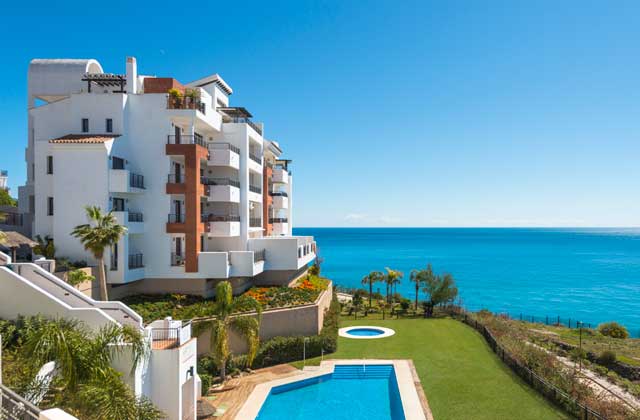
Olée Nerja Holiday Rentals
Fuerte Group is always the best option to stay in Andalusia, see its cities and rest. The chain has branches where you can enjoy the best of each area throughout the region, in addition to its services. Its more than 60 years of experience are the best guarantee. Marbella or Torrox are some sites where you can find this amazing accommodation.
